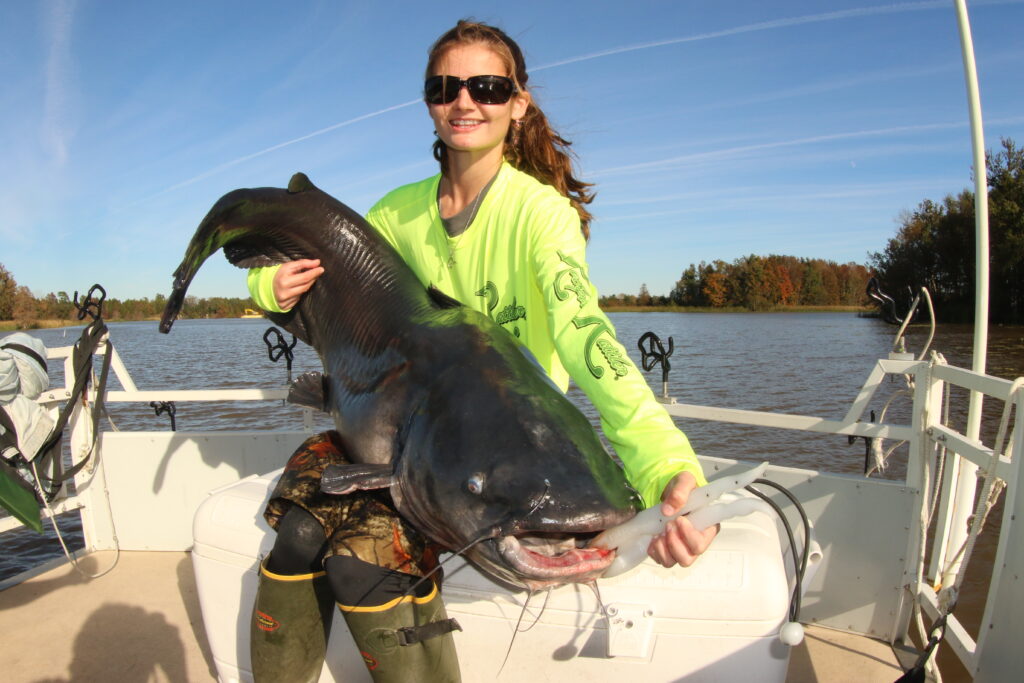Drifting for catfish at Santee Cooper

One species that draws anglers from all over the country to the Santee Cooper lakes is the blue catfish. And drifting is one of the most effective ways to catch them. The variety of depths throughout both the upper and lower lakes gives catfish a lot of space to roam. And while anchoring down to cast to them works just fine at times, anglers who drift are constantly covering huge swaths of water. So instead of waiting on the catfish to come to their lines, they are presenting their bait to catfish all over the place.
Capt. Jason Wolfe of Wolfe’s Guide Service is a big fan of drifting, especially on the Santee Cooper lakes. “When you’re sitting at anchor, you’re waiting for the fish to come to you. When you’re drifting, you’re putting your bait in front of fish you’ll never cross paths with if sitting still. Drifting allows you to cover a lot of water in a short period of time,” said Wolfe.
Another thing he likes about drifting is that it lets you cover such a wide range of depths. A 100-yard drift on these lakes will have your bait hitting all the deep holes, the shallow humps, and everywhere in between. Whatever depth the fish are holding, drifting will put your bait in front of them.
Wolfe likes a steady 10-mph wind to help him drift
“A 10-mph wind will push me along nicely at about .7 miles per hour. That’s an ideal speed for drift fishing,” he said.
When the wind is greater than that, he deploys drift socks — devices that open up like parachutes in the water, slowing your boat’s speed. One drift sock slows your boat a little; two slows it more, and three slows it even more. Having multiple drift socks allows you to slow down enough no matter how hard the wind is blowing.
Rod holders are also important for drift fishing.
“You can have all your rods out, doing all the work for you as you drift. Good rod holders will keep your rod tip high and help keep your baits spread out properly.
Weights to keep your bait sliding along the bottom are all necessary. Many anglers use egg sinkers or teardrop sinker, but the Santee Rig is also very popular. This involves a weight made of parachute cord filled with lead shot. That weight is added to a regular Carolina rig and gets snagged less often than most other sinkers.
But Wolfe prefers a step up from that. He uses Drifting Stix, thin, flexible weights that hold their shape better than parachute cord, slipping and sliding through even the worst cluster of debris along the bottom.
“If you drift often enough, you’re bound to get hung up at some point. But I get hung far, far less often when using Drifting Stix than with parachute cord weights. They really work great and I won’t drift without them on my line,” said Wolfe.
Trolling motor sometimes help when drifting
When the wind is too strong or blowing at the wrong angle, Wolfe will often use his trolling motor to keep his boat positioned properly.
“You’re still being moved by the wind, so you’re still drifting. The trolling motor is simply helping keep you on track by allowing you to steer. You can also use it to slow your boat down if the drift socks aren’t helping enough,” he said.